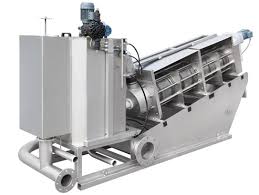The manufacturing industry is a major contributor to the US economy, empowering numerous businesses and individuals in diverse areas. It ranges from the most basic items like toothpicks and clothing to the most significant ones like cars and airplanes. The industry not only serves as a source of employment for millions but also improves the lifestyle of millions of global clients.
As new technologies emerge, the industry is also upgrading its various divisions and workflows. Digitalization of workflows and procedures allows it to automate operations, benefiting from custom software development New York environment. We will explain the meaning, types, and benefits of automation in this sector and the role of custom software development New York.
What is Automation?
Automation is the process of replacing manual tasks with self-regulating systems using diverse tools and technology. It comprises the machinery, control systems, and information technologies to optimize performance and precision. The primary goal of automation is to improve operational efficiency, enhance accuracy, reduce labor costs, and increase safety.
The concept ranges from simple applications like automatic entrances and household appliances to complex systems like industrial robots and AI-powered solutions. It transforms how businesses operate, enabling more consistent and high-quality outputs while reducing resource utilization.
Types of Automation
From an industrial perspective to technological relevance, we may categorize automation into many types. However, the following are its categories on the basis of application and complexity.
1. Fixed Automation (Hard Automation)
Fixed Automation is a category that delivers high production volumes and low flexibility. It involves the use of special equipment designed to perform a specific set of tasks. This type of automation is best suited for mass production, where the production process is rigid.
2. Programmable Automation
Programmable Automation allows for the reprogramming of equipment to handle different tasks or products. It is suitable for batch production where the volume of each batch is relatively high, but there is a need to change the production process at times.
3. Flexible Automation (Soft Automation)
Flexible Automation is the most adaptable type of automation. It allows for a high degree of customization and can handle a variety of products without significant downtime for reconfiguration. This type of automation is ideal for environments where products frequently change.
4. Industrial Automation
Industrial automation employs autonomous systems using computers, robots, and technologies to perform tasks and workflows. It is common among manufacturing practices and includes assembly lines, chemical processing, and material handling.
5. Office Automation
Office Automation refers to the use of computer systems and software to digitally create, collect, store, manipulate, and relay office information needed for accomplishing basic tasks and goals. It can include anything from data management systems to communication tools.
6. Home Automation
Home Automation involves the use of technology to control home appliances and systems, such as lighting, climate control, entertainment systems, and security systems. Another famous name for this type is “smart home” technology.
7. Business Process Automation (BPA)
Business Process Automation utilizes technology to replicate recurring tasks or processes in an organization where manual efforts are replaceable. It aims at achieving greater efficiency by streamlining business operations.
8. Robotic Process Automation (RPA)
Robotic Process Automation uses software robots or “bots” to automate highly repetitive, routine tasks traditionally performed by a human interacting with digital systems.
9. Cognitive Automation
Cognitive Automation combines RPA with artificial intelligence (AI) and machine learning to handle more complex tasks that involve decision-making and learning from data.
Automation in the Manufacturing Industry
Automation in manufacturing began with simple mechanization processes but is now evolving into sophisticated systems with robotics, AI, and IoT. These technologies are forging new paths to smart manufacturing and Industry 4.0, where systems communicate and implement decisions. Let’s unravel the types that are changing the sector and the benefits they offer to manufacturers.
1. Types of Automation in Manufacturing
The subsequent types are prevalent in the industry:
Fixed Automation
It assists high-volume production with special equipment inevitable for specific tasks. This type is common in assembly lines, as it aids in huge output but lacks flexibility.
Programmable Automation
It is most suitable for batch production, as it allows reprogramming machines for different tasks. CNC machines and industrial robots are typical examples.
Flexible Automation
It is highly adaptable, and systems can handle various products with minimal reconfiguration. Its flexibility is ideal for industries where product designs frequently change.
Industrial Automation
It encompasses control systems like SCADA (Supervisory Control and Data Acquisition) and PLCs (Programmable Logic Controllers) to manage industrial processes.
Robotic Process Automation (RPA)
It utilizes software and robotics to automate routine tasks, enhancing efficiency and accuracy in administrative processes.
2. Benefits of Automation in Manufacturing
The common benefits of integrating automation tools and software in manufacturing are:
Increases Efficiency
It speeds up the production processes, increasing output while reducing cycle times.
Improves Quality
Autonomous systems maintain precision, resulting in high-quality products with fewer defects.
Cost Reduction
It lowers labor costs and reduces material waste, leading to significant cost savings.
Enhances Safety
It reduces the need for human resources in risky environments, improving workplace safety.
Scalability
It scales up or down as per changing production demands without significant downtime.
Custom Software Development New York
New York is a leading center for technology and innovation, making it ideal for custom software development, let alone automation. Custom software solutions are essential for integrating and optimizing automation technologies within manufacturing processes. It attains the ensuing goals:
Integration
Seamlessly integrates automation systems with existing IT infrastructure to enhance operational efficiency.
Data Analytics
Utilizes analytics to monitor production processes in real time, providing insights for continuous improvement.
Machine Learning and AI
Embeds AI and machine learning algorithms for demand forecasts, predictive maintenance, performance optimization, and data-driven decision-making.
User-Friendly Interfaces
Develops intuitive interfaces for operators and managers to control and monitor autonomous systems easily.
Scalability and Flexibility
Ensures that software solutions scale with the business and integrate with new technologies as they emerge.
Conclusion
Custom software development New York environment is very supportive of growth acceleration and digital transformation. It tailors solutions for manufacturing automation, strongly impacting the local and global manufacturing sectors. It enables manufacturers to stay competitive in a dynamic market by adopting the latest technologies and optimizing their operations. This article covers the meaning, types, and benefits of automation in the manufacturing industry. It also outlines the role of custom software development New York firms in the sector’s overall progress.



